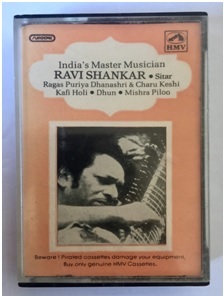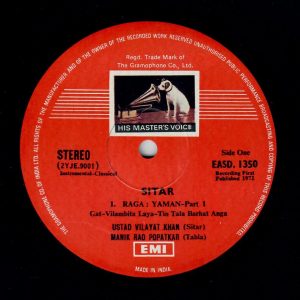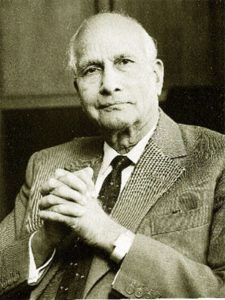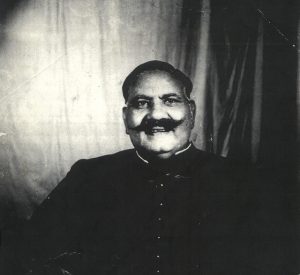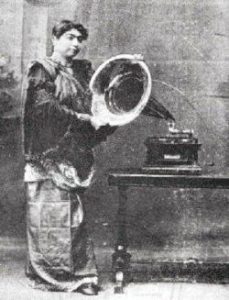| Told by | Ustd. Irfan Muhammad Khan |
| Obtained by | Prof. Sanjoy Bandopadhyay and Troilee Dutta |
| Date | 27 September, 2016 |
| Place | Residence of Prof. Sanjoy Bandopadhyay, 3/1/1D, Padmapukur Road, Kolkata 700092 |
| On Irfan Muhammad Khan | Irfan Md. Khan is an established Sarod Player. The scion of Lucknow Shahjanpur Gharana Sarod player. He represents the Lucknow-Shahjahanpur Gharana which has produced eminent Sarod players like Ustad Enayet Khan (1790-1883), Ustad Asadullah Khan Kaukab (1852-1919), Ustad Karamatuilah Khan (1848-1933), Prof. Sakhawat Hussain Khan (1875-1955), also his illustrious father Ustad Umar Khan (1916-1982) and his uncle Ustad Ilyas Khan (1924-1989) the famous Sitar player of Lucknow. |
| Key-words | Asadulla Khan, Kaukab Khan, kaukabh, Pratibha Devi, Debi, Karamatullah Khan, sangeet sabha, Motilal Nehru, 1908, Paris World fare, broken sarod, Banjo, Dwarkin, Kaukab patent Banjo, Betel. Calcutta, |
| Language | Hindi |
Ustd. Irfan Muhammad Khan speaks:
Verbatim:
???? ??? ????? ?? ??? ?? ??? ??? ??????? ???? ?? ??????????? ??? ????? ?? ???? ?????
– ??? ??????? ???? ?? ???? ?? ???? ?? ???????
– ??? ??????? ???? ??????????? ???? ?? ??? ??? ?? ???? ?? ?????? ????? ???? ??? ???? ???? ?? ???????? ?? ??? ???? ????????? ?? exact location ???? ????? ?? ????? ?? but I don’t remember it. ?? ??? ?????? ??? ?? ??? ?????? ???? ?? ???? ??? ??? ???? ??? ?? ?? ??????? ?????? ??? ?? ??? ????????, ??????????? ??? ????? ??? ?? ???…???? ???? ?? ?? ?? ???? ????? ?? ??????? ?????? ????? ?? ???? ???
– ???? ??? ?????
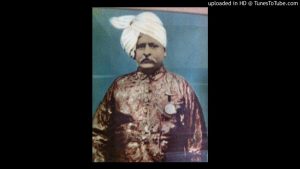
– ????????? ??? ???? ?? ??????????? ???? ….To represent India? ??????? ??? ?? ??? ????? ?????????? ???? ??? ???? ??? ????? ?? ????? ??? ???? ?? ??? ??????? ?? ??? ?????? ????? ?? ?? ??? ?????? ?? ?? ?? ??? ?? ??? ???? ??????? ??? ?? ???? ???? ???? ?? ?????? ??? ???? ??? ?????????? ??? ?????? ?? ??? ???? ????…?? ???? ???? ?? ??? ??? ????? ?? ?? ???????? ????? ?????? ?? ???????? ?????? ?? ???? ??? ???? ?? ???????? ?????…shave off the frets ???? ????? ?? ??? ?? ?? ???????? ???? ???? ???? ?? ??? ????? ???? ????????? ???? ???? ???? ??? ?? ?? ???????? ?? ???? ????? ?? ??????? ???? ??? ?? ???????? ???? ??????? ???????? ?? ?????? ?? ??? ??????? ?? ???????? (Dwarkin) ????? ?? …??????????? ????? ?? ? ??? ?? ????? ?? ?? ???? ??????? ???????? ???? ??? ?? ?? ?????? ???
– ???????? ????????…?
– ???????? ???????? ?? ??? ?? ??? ??? ?????? ?? ????? ??? ????? ??? ???? ?? ?? ???? ?? ?? ???? ?? ?? ???? ??????? ???????? ??????? ???? ????? ?? ??????? ?????…??? ?? ??????? ?????? ?? ????? ???? ?? ?? ?? ???????? ?? ?? ??????
Verbatim by: Dr. Suranjita Paul
Translation:
– After the death of Kaukav Khan, Pratibha Devi called Karamatullah Khan.
– Tell us something about Pratibha Devi.
– Pratibha Devi was the daughter-in-law of Rabindranath Tagore. She had opened a music school. I think it was in Bhowanipore, or maybe somewhere in North Kolkata. My father had told me where it was, but I don’t remember it. There he was the teacher. In the meantime, what happened was, when Kaukav Khan was teaching, Motilal Nehru took him to Allahabad. Before that, Motilal Nehru had sent the two brothers to the Paris World Fair in 1908.
– Who were the two brothers?
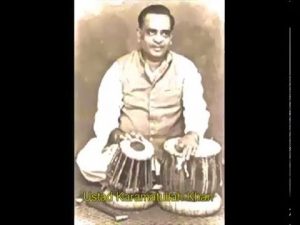
– Kaukav Khan and Karamatullah Khan. They had been taken to represent India. They went to Paris and the Great Exhibition. There is a very interesting anecdote. Kaukav Khan’s sarod had broken. Now who could build him a sarod in Paris? He was very upset. The concert was just after two days. So he asked around whether there was anyone who could build him a sarod. As he was roaming around, he spotted a banjo. He bought the banjo and shaved off the frets to make it plain. And he played the banjo in place of his sarod at the concert, like the Sarod. Since then, the banjo became his signature, like his patent. Here in Kolkata, there was Dwarkin Shop owned by Gyan babu’s father. Banjos were available there. The banjo had become his patent. They even called it ‘Kaukuv patent banjo’.
– ‘Indian Banjo’?
-That’s what they wrote on the records. If someone went to the shop to buy it, they’d say, “I want the Kaukab Patent Banjo.” He has seven or eight records where he has played that banjo.
Translation by: Sarbajaya Bhattacharya
Picture Courtesy: Google
https://www.youtube.com/watch?v=kVFb1zP_n0k
https://www.youtube.com/watch?v=MHOJJZJ-1S0
Edited & Designed: Dr. Suranjita Paul
Data processed at SAP-DRS Lab, Department of Instrumental Music, Rabindra Bharati University.

